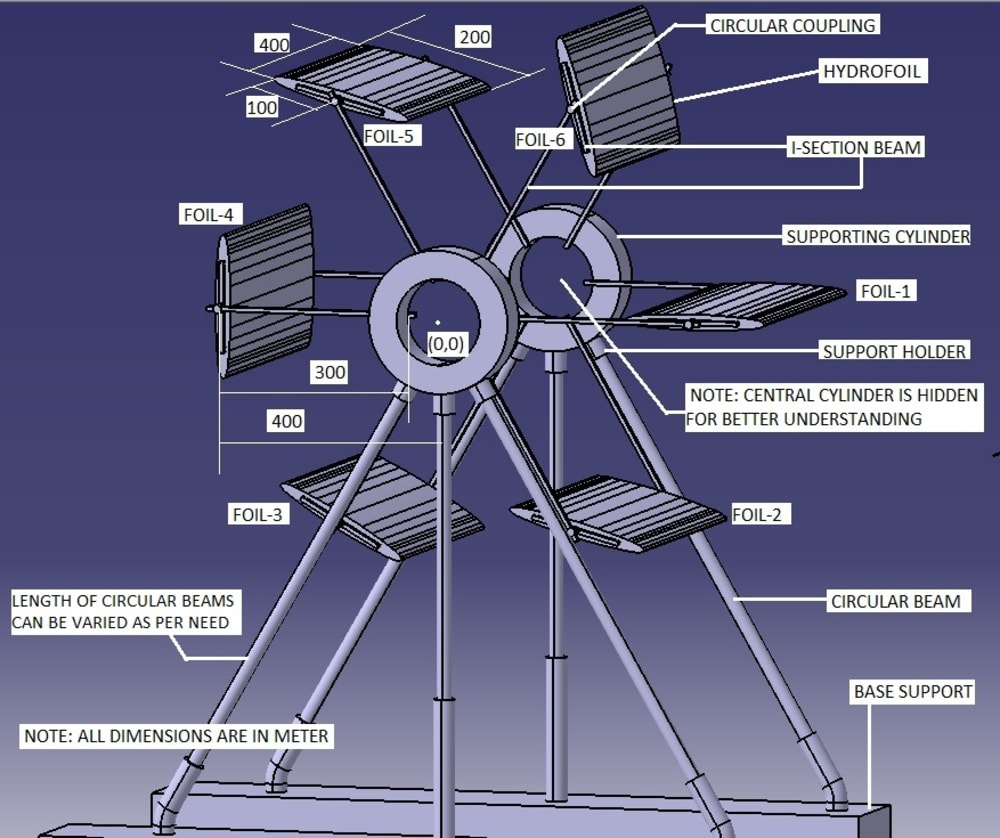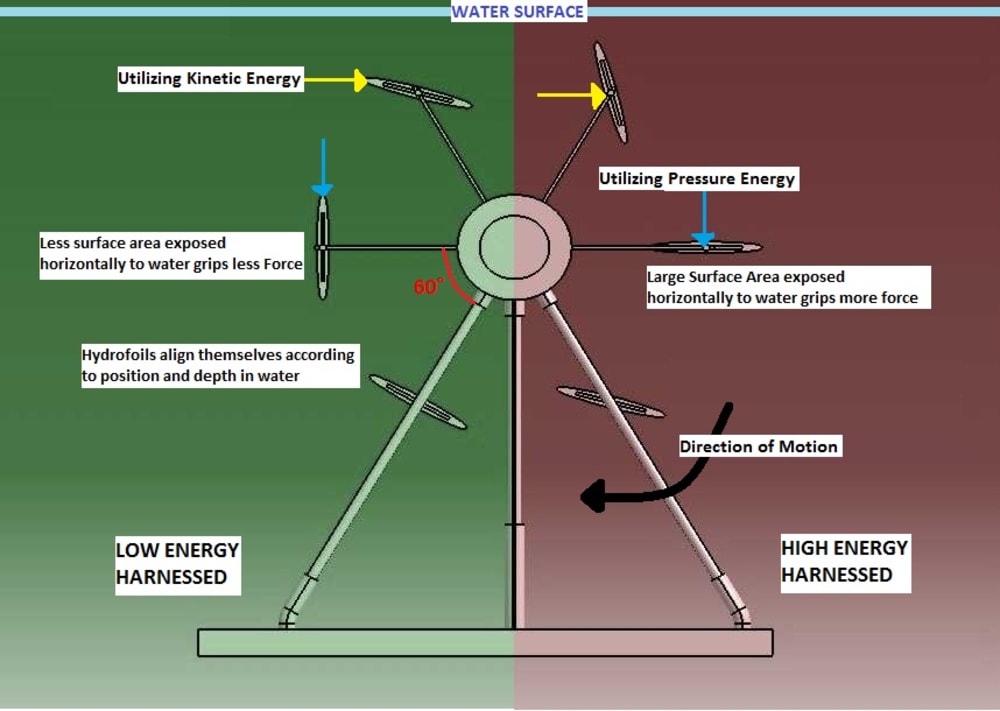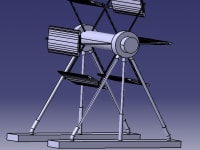Concept:
The Underwater Electricity Generator works on principle of transforming Pressure and Kinetic Energy of water into Electrical Energy by rotary motion, which is first of its kind.
Objectives:
- Target of 8000 GW
- Apprehend Pressure and Kinetic Energy.
- Continuous power generation irrespective of weather and load variations.
- Something new and unique, which shall be powerful, efficient and useful for at-least 200 years.
Methodology:
- Primary influence is of Pressure Energy acting on large hydrofoil areas at varying depths.
- As waves and tides have periodic occurrence of ‘2’ every 24 hours, hence termed secondary influence, which is neglected so that we can design self-sustaining rotary generator.
- Using Cartesian System, SI Units and considering positive angle in clockwise direction.
Model Conceptualization:
Revised model of Ferris wheel is conceptualized, because large surface area, high pressure difference and continuous rotary motion can be achieved with ease in construction and maintenance.
Construction:
- Revised Ferris wheel diameter including hydrofoil is 1000m, which is supported by one sided tripod frame on both sides.
- I have designed hydrofoil having surface area of 400*200 m² with max thickness of 22m at center, made of aluminium alloy to reduce mass moment of inertia.
- Circular coupling at center of hydrofoil allows it to rotate on its own axis through motors.
- Total 6 hydrofoils are incorporated at 60° from each other affixed to frame’s cylindrical structure by I-Beams.
- Cylinder has a diameter of 200m and length 400m, which houses electricity generators.
- Cylinder has support structure attached on its faces, fixed by cylindrical beams of 10m diameter to ground.
Working:
Marking (0,0) as the center point for Underwater Electricity Generator’s(UEG) structure, and along its axis all 6 hydrofoils rotate. The hydrofoil on positive x-axis is named foil-1; the next is foil-2 in clockwise direction, and so on till foil-6
- UEG works on difference in pressure forces on hydrofoils, on either side of y-axis.
- Weight of foils is neglected as 3 blades are mounted on both side of y-axis, which balances out.
- Considering foil-1, at 0° angle and at a depth of 500m, total force exerted on whole surface area is F1= -3.924E11 N
Considering foil-4, at 270° angle and at a depth of 500m, total force exerted on whole surface area is F4= -4.3164E10 N
∆F14= F1-F4= -3.49236E11 N
Similarly, foil 2 and 3 at a depth of 782.84m and angle of 45° and 120° respectively
∆F23= F2-F3= -1.2724E11 N
- Foil 5 and 6 align themselves in a manner that, they can harness maximum kinetic energy from waves and tides. (But neglected, as stated in methodology)
- Net Force acts in downward and clockwise direction, triggering the turbine to rotate around its axis
- Angle of attack of hydrofoils keeps varying with respect to the position and depth in water, resulting in utmost efficiency and performance.
Result:
Considering 50% efficiency, 7484 GW power is produced by Underwater Electricity Generator. UEG's size can-be varied according to requirements.
Video
Like this entry?
-
About the Entrant
- Name:Neeraj Abhang
- Type of entry:individual
- Software used for this entry:CATIA
- Patent status:pending








